
The Tachinidae are a large and variable family of true flies within the insect order Diptera, with more than 8,200 known species and many more to be discovered. Over 1,300 species have been described in North America alone. Insects in this family commonly are called tachinid flies or simply tachinids. As far as is known, they all are protelean parasitoids, or occasionally parasites, of arthropods, usually other insects. The family is known from many habitats in all zoogeographical regions and is especially diverse in South America.

Calyptratae is a subsection of Schizophora in the insect order Diptera, commonly referred to as the calyptrate muscoids. It consists of those flies which possess a calypter that covers the halteres, among which are some of the most familiar of all flies, such as the house fly.

Oestroidea is a superfamily of Calyptratae including the blow flies, bot flies, flesh flies, and their relatives. It occurs worldwide and has about 15,000 described species.
Lixophaga is a genus of flies in the family Tachinidae.

Actia is a genus of large flies in the family Tachinidae.
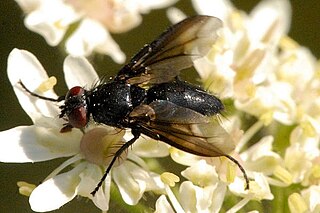
Voriini is a tribe of flies in the family Tachinidae. More junior homonyms exist of Wagneria than any other animal genus name.

Dexiinae is a subfamily of flies in the family Tachinidae.

Dexiini is a tribe of flies in the family Tachinidae.

Exoristinae is a subfamily of flies in the family Tachinidae. Most species are parasitoids of caterpillars.
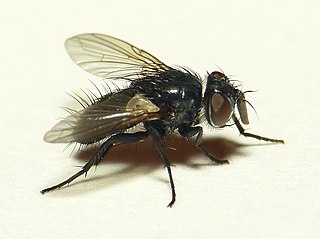
Blondeliini is a tribe of parasitic flies in the family Tachinidae. Larvae are parasitoids of other insects, mostly beetles and caterpillars. Although nearly cosmopolitan, its greatest diversity is in the New World and especially in South America.

Eryciini is a tribe of flies in the family Tachinidae.

Goniini is a tribe of parasitic flies in the family Tachinidae. Members of Goniini are distinguished from other Tachinidae by laying small "microtype" eggs that hatch only after being ingested by a host.
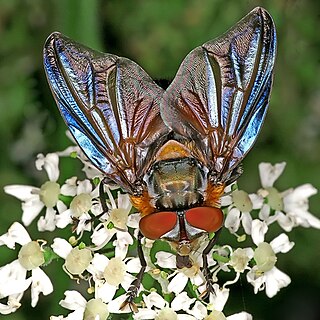
Phasiinae is a subfamily of flies in the family Tachinidae. Except for the small tribe Strongygastrini members of this subfamily attack only Heteroptera.
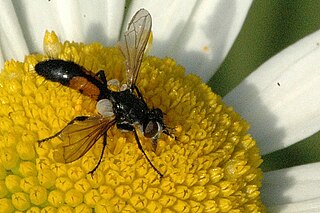
Cylindromyiini is a tribe of flies in the family Tachinidae. It contains about 17 genera and 200 species.
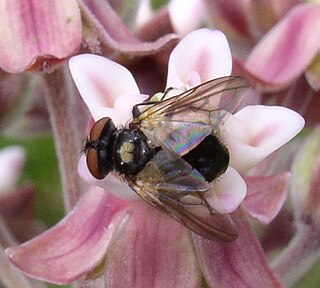
Phasiini is a tribe of flies in the family Tachinidae. As a result of phylogenetic research, most members of this tribe were transferred to other tribes in the subfamily, leaving only the two genera Elomya and Phasia.
Acemyini is a small but cosmopolitan tribe of flies in the family Tachinidae. Like all tachinid flies, acemyiines are parasitoids of other invertebrates. Specifically, the acemyiines are parasitoids of Orthoptera in the families Acrididae and Eumastacidae.

Tachininae is a subfamily of flies in the family Tachinidae.

Minthoini is a tribe of flies in the family Tachinidae.

Tachinini is a tribe of flies in the family Tachinidae.

Polideini is a tribe of bristle flies in the family Tachinidae. The tribe is unusual for its diversity of hosts, including spiders, scorpions, and centipedes in addition to the usual insect larvae.














